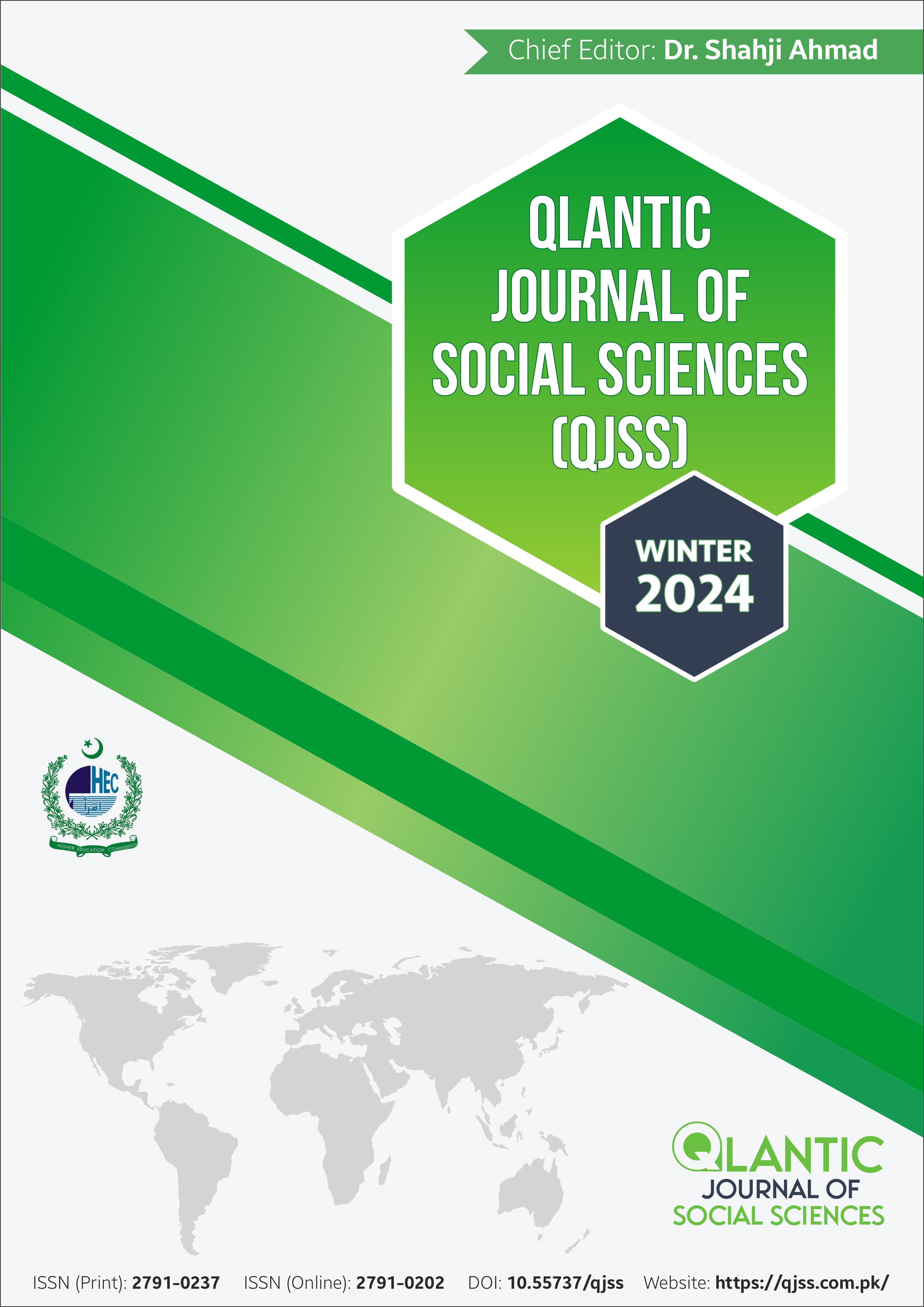An Action Research to Enhance Students’ Classroom Engagement through Group Tasks among 8th Graders
DOI:
https://doi.org/10.55737/qjss.671049334Keywords:
Students’ Engagement, Group Task, Classroom EngagementAbstract
This study investigated the effect of employing group tasks to improve student engagement in classroom at level of Grade VIII. Engaging students in the learning process presents a significant challenge for educators. This study examined how several group tasks affect student engagement in Grade 8th (A). The study incorporated a single-group pre-post experimental quantitative design; quantitative data was collected over ten weeks. The data encompassed observation rating scale. The sample was based on 40 students who were selected through purposive technique from Government Boys High School Bagrian, Lahore. Descriptive and inferential data analyses techniques were used. Findings suggested a strong link between the implementation of group tasks by increased student engagement. Students participated in group tasks showed active involvement, and deeper engagement in the learning process. The analyses revealed the positive effect of group tasks on student engagement within the one grade and classroom. This research contributed by highlighting the importance of group tasks, in creating an effective learning environment through engagement for Grade 8th students. The implications extend beyond academic performance to include the holistic development of adolescents, nurturing both cognitive and social skills.
References
Aronson, E. (1978). The jigsaw classroom. Beverly Hills, CA: Sage Publications.
Bandura, A. (1997). Self-efficacy: The exercise of control. W. H. Freeman and Company.
Casel. (2020). what is SEL? Retrieved from https://casel.org/what-is-sel/
Cassar, A. G., & Jang, E. E. (2010). Investigating the effects of a game-based approach in teaching word recognition and spelling to students with reading disabilities and attention deficits. Australian Journal of Learning Difficulties, 15(2), 193-211. https://doi.org/10.1080/19404151003796516
Cohen, L., Manion, L., & Morrison, K. (2018). Research methods in education. (8th ed.). Routledge.
Cohen, E. G. (1994). Restructuring the classroom: Conditions for productive small groups. Review of Educational Research, 64(1), 1-35. https://doi.org/10.3102/00346543064001001
Creswell, J. W. (2014). Research design: Qualitative, quantitative, and mixed methods approach. Thousand Oaks, CA: Sage Publications.
Creswell, J. W., & Creswell, J. D. (2022). Research design: Qualitative, quantitative, and mixed methods approaches. (6th ed.). Sage.
Deci, E., & Ryan, R. M. (2013). Intrinsic Motivation and Self-Determination in human behavior. Springer.
Durlak, J. A., Weissberg, R. P., Dymnicki, A. B., Taylor, R. D., & Schellinger, K. B. (2011). The impact of enhancing students’ social and emotional learning: A meta‐analysis of school‐based universal interventions. Child Development, 82(1), 405-432. https://doi.org/10.1111/j.1467-8624.2010.01564.x
Dweck, C. S. (2006). Mindset: The new psychology of success. New York, NY: Random House.
Edmondson, A. (1999). Psychological safety and learning behavior in work teams. Administrative Science Quarterly, 44(2), 350-383. https://doi.org/10.2307/2666999
Epstein, J. L. (2018). School, family, and community partnerships: Preparing educators and improving schools (3rd ed.). Boulder, CO: Westview Press.
Fredricks, J. A., Blumenfeld, P. C., & Paris, A. H. (2004). School engagement: Potential of the concept, state of the evidence. Review of educational research, 74(1), 59-109. https://doi.org/10.3102/00346543074001059
Gay, G. (2002). Preparing for culturally responsive teaching. Journal of Teacher Education, 53(2), 106-116. https://doi.org/10.1177/0022487102053002003
Gillies, R. M. (2003). The behaviors and interactions of adolescent students in cooperative learning groups. The Journal of Early Adolescence, 23(1), 23-47.
Gillies, R. (2016). Cooperative learning: Review of research and practice. Australian Journal of Teacher Education, 41(3), 39-54. https://doi.org/10.14221/ajte.2016v41n3.3
Johnson, D. W., & Johnson, R. T. (1994). Learning together and alone: Cooperative, competitive, and individualistic learning (4th ed.). Boston, MA: Allyn and Bacon.
Johnson, D. W., Johnson, R. T., & Smith, K. A. (2014). Cooperative learning: Improving university instruction by basing practice on validated theory. Journal on Excellence in College Teaching, 25(3&4), 85–118.
Johnson, D. W., & Johnson, R. T. (2005). New developments in social interdependence theory. Genetic, Social, and General Psychology Monographs, 131(4), 285-358. https://doi.org/10.3200/mono.131.4.285-358
Johnson, D. W., & Johnson, R. T. (2009). An educational psychology success story: Social interdependence theory and cooperative learning. Educational Researcher, 38(5), 365-379. https://doi.org/10.3102/0013189x09339057
Roseth, C. J., Johnson, D. W., & Johnson, R. T. (2008). Promoting early adolescents' achievement and peer relationships: The effects of cooperative, competitive, and individualistic goal structures. Psychological Bulletin, 134(2), 223-246. https://doi.org/10.1037/0033-2909.134.2.223
Slavin, R. E. (2014). Making cooperative learning powerful. Educational Leadership, 72(2), 22-26.
Slavin, R. E. (2014). Cooperative learning in elementary schools. Education 3-13, 43(1), 5-14. https://doi.org/10.1080/03004279.2015.963370
Tomlinson, C. A. (2001). How to differentiate instruction in mixed-ability classrooms. ASCD.
Tuckman, B. W. (1965). Developmental sequence in small groups. Psychological Bulletin, 63(6), 384–399. https://doi.org/10.1037/h0022100
Vygotsky, L. S. (1978). Mind in society. The development of higher psychological processes. Harvard University Press.
Webb, N. M. (2009). The teacher's role in promoting collaborative dialogue in the classroom. British Journal of Educational Psychology, 79(1), 1-28. https://doi.org/10.1348/000709908x380772




